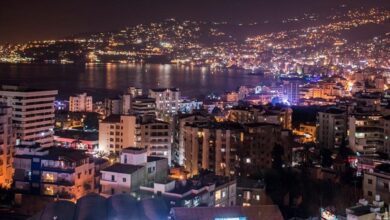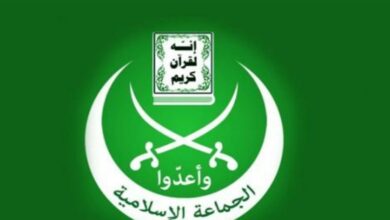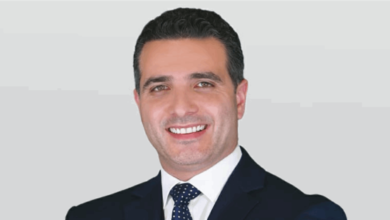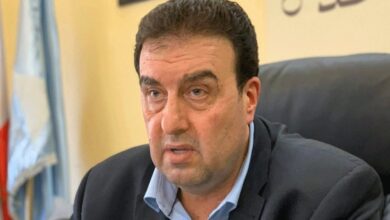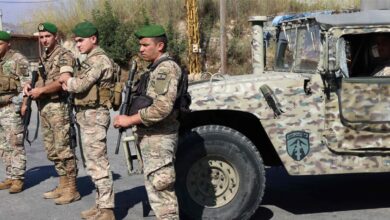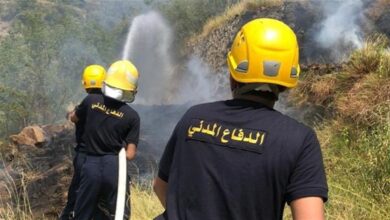Lebanese observations regarding Sigourney’s second visit to Beirut
Some observations derived from what Lebanese officials received regarding Sigourney’s second visit to Beirut after the first on February 6, as follows:
1 – Despite Paris’s knowledge of Hezbollah’s categorical position not to disengage from Israel unless it insists on stopping the Gaza war, its visiting minister aims from the new round of his talks to reach a “virtual draft” of the security arrangements proposed by his government, to be able to agree on them on paper within a limited period of time. Soon, provided that it is implemented on the ground at the appropriate time, which is the stage after the ceasefire in Gaza. The opposite point of view, held by Hezbollah at best, is that no one can predict in advance the outcome of the Gaza war and an explosive regional situation in which a new development and additional factor occurs daily.
2 – Paris is approaching its proposal for security arrangements in a manner similar to what it participated in developing in the “April Understanding” announced on April 26, 1996. Ironically, the anniversary of its date coincides with the eve of Sigourney’s visit to Beirut yesterday. The “April Understanding” was based on stopping military actions between Hezbollah and Israel, preventing the targeting of civilians, and engaging in a committee to monitor its implementation, which included – at the time – the two sides of the conflict – Lebanon, the United States, and France, not to mention Syria, which was present at that time on Lebanese territory and the main partner in the understanding negotiations. What the new French arrangements rely on is the conformity of the 1996 understanding with the new understanding that is planned to occur if it comes to light through the trio of Naqoura meetings (Lebanon, Israel, and the United Nations). Then, if the two warring parties agree to form a five-member monitoring committee that includes members of the 1996 Committee, with the exception of Syria, which has lost its previous role. Similar to the 1996 understanding, the 2024 understanding is intended to be only military.
3 – What was not raised in the 1996 understanding drawn up by Hezbollah since before the Gaza War, and then this war came to make it inevitable in any subsequent settlement, is the fate of the outstanding border points between Lebanon and Israel, especially the remaining seven points, including B1, and the stabilization of the land borders. All the way to Shebaa Farms. Since learning of the first French version, Hezbollah has been avoiding, waiting for the appropriate time, to take any declared position on it, except for expressing its unwillingness to enter into security arrangements that exclude the main non-implemented part of Resolution 1701. The Security Council’s resolution is not limited to a weapons-free security buffer zone. South of the Litani River, the deployment of the Lebanese army and the reinforced international force, as well as the Israeli violations and Israel’s annulment of the remaining lands it occupies in the south.
The content of this party’s note is that the French version, the first and then amended, was limited to separating the stages chronologically and procedurally, leading it to refuse to discuss the deal in its entirety. There are no definitive guarantees for the stage following the first, which is a ceasefire, by moving to the third stage, which is left to the time factor to delve into. This is what also happened when implementing Resolution 1701. Its first stage is the cessation of hostilities before moving on to the next stages. If its application between the years 2006 and 2024 is limited to the cessation of hostilities.
4 – What Hezbollah seems serious about is that a return to the eve of October 8, 2023 is impossible in its mind, given what the hypothetical draft calls for is its withdrawal ten kilometers north beyond the Litani River. Therefore, it is not only the interconnectedness of the stages that he seeks, but also reaching a political settlement in one aspect of it. This is what accompanied the April 1996 understanding, which ended with the recognition of the legitimacy of the resistance in liberating Lebanese lands. What Hezbollah realizes, in approaching the April 1996 understanding that was intended to be reached, is that it was the actual negotiating party without being sitting at the table, so its place was occupied in its name and on its behalf by the then Prime Minister Rafik Hariri. Because it was so, the Nissan Understanding saw the light. Because it was also the main party in signing the maritime demarcation agreement between Lebanon and Israel in 2022.
[previous_post_link]

